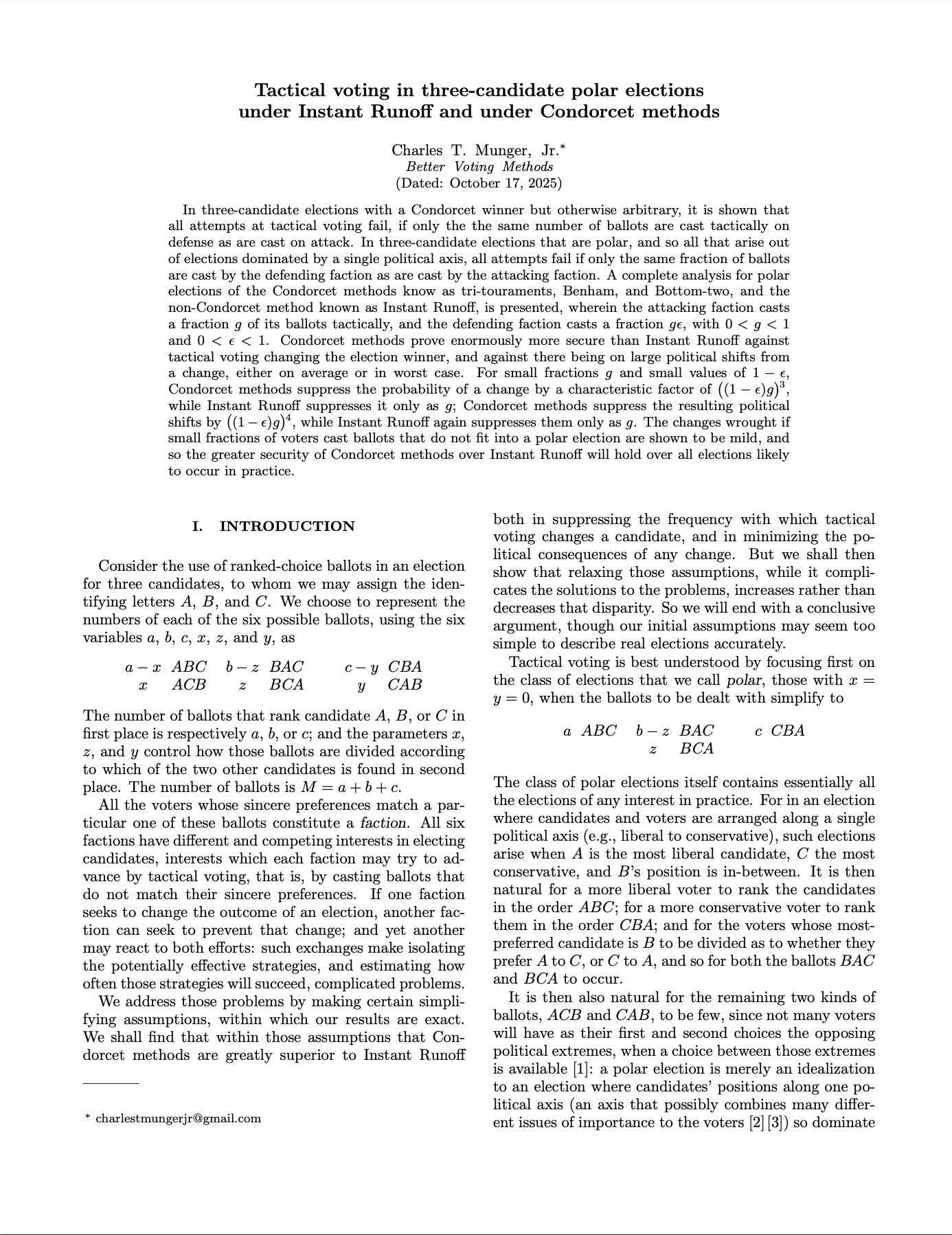Tactical voting in three-candidate polar electionsunder Instant Runoff and under Condorcet methods
Summay: In three-candidate elections with a Condorcet winner but otherwise arbitrary, it is shown that all attempts at tactical voting fail, if only the the same number of ballots are cast tactically on defense as are cast on attack. In three-candidate elections that are polar, and so all that arise out of elections dominated by a single political axis, all attempts fail if only the same fraction of ballots are cast by the defending faction as are cast by the attacking faction. A complete analysis for polar elections of the Condorcet methods know as tri-touraments, Benham, and Bottom-two, and the non-Condorcet method known as Instant Runoff, is presented, wherein the attacking faction casts a fraction g of its ballots tactically, and the defending faction casts a fraction gϵ, with 0 < g < 1 and 0 < ϵ < 1. Condorcet methods prove enormously more secure than Instant Runoff against tactical voting changing the election winner, and against there being on large political shifts from a change, either on average or in worst case. For small fractions g and small values of 1 − ϵ, Condorcet methods suppress the probability of a change by a characteristic factor of (1 − ϵ)g 3, while Instant Runoff suppresses it only as g; Condorcet methods suppress the resulting political shifts by (1 − ϵ)g 4, while Instant Runoff again suppresses them only as g. The changes wrought if small fractions of voters cast ballots that do not fit into a polar election are shown to be mild, and so the greater security of Condorcet methods over Instant Runoff will hold over all elections likely to occur in practice.
